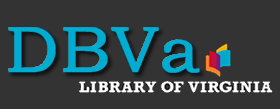CONTENT WARNING
Materials in the Library of Virginia’s collections contain historical terms, phrases, and images that are offensive to modern readers. These include demeaning and dehumanizing references to race, ethnicity, and nationality; enslaved or free status; physical and mental ability; and gender and sexual orientation.
Context
This pamphlet was one of many produced by the Equal Suffrage League of Virginia (ESL) to advocate voting rights for women during the 1910s. About twenty women met in Richmond in 1909 to establish the Equal Suffrage League of Virginia. Many of the officers, including League president Lila Meade Valentine, were involved in the social reforms of the time, collectively known as the Progressive movement. They understood that having the vote would give them more political influence and a better chance to achieve their other goals. Many of them believed that the right to vote was an essential aspect of citizenship to which women were entitled. Within ten years, more than 130 local leagues had been organized from the Eastern Shore to southwestern Virginia, with more than 20,000 members statewide. The league's membership did not include Black women. Barred from entry, Black women worked for voting rights through their own women's clubs and other organizations.
In fact, the Equal Suffrage League often countered the anti-suffragist argument that allowing women to vote would increase the Black vote. Many members tried to reassure white voters that there were enough other restrictions in place to ensure that the majority of Black voters would remain disfranchised. They often published letters and pamphlets seeking to reassure white voters that their interests would be safe.
Equal Suffrage League members collected signatures on petitions to submit to the General Assembly, they staffed booths at the state and county fairs, and they made suffrage speeches at county courthouses, schools, churches, movie theaters, and on street corners to educate the public and develop support for woman suffrage. The Equal Suffrage League also printed postcards and published leaflets, broadsides, and pamphlets for statewide distribution. The ESL focused on educating and persuading men and women of Virginia, and while they had "street meetings," or public demonstrations, they avoided picketing at the White House and preferred to persuade through public speaking, lobbying, and writing pamphlets like these.
Citation: Equal Suffrage League of Virginia, "Voting Qualifications in Virginia," Equal Suffrage League of Virginia Records, 1908-1938, box 7, Accession 22002, Library of Virginia.
Related Document Bank entries:
Twelve Reasons Why Mothers Should Have the Vote
Virginia Association Opposed to Woman's Suffrage, Broadside, c. 1910s
Anti-Suffrage Arguments, Broadside, Circa 1912
Learn more:
View a timeline of the campaign for women's voting rights in Virginia at We Demand: Women's Suffrage in Virginia.
Learn more about Lila Meade Valentine in her Dictionary of Virginia Biography entry.
Standards
Suggested Questions
Lesson Plan
For detailed lesson plan options, visit our Lesson Plan on the Woman Suffrage Movement in Virginia.
Preview Activity
Analyze: Look at the justifications for woman suffrage. What do you think of the argument, and why?
Post Activities
Take a Stand: Imagine you are an early supporter of voting rights for women. What arguments would you make to convince someone to support the movement? Do you think that you would try to use the argument presented in this pamphlet? What other arguments might have been more useful?
Be the Journalist: Imagine you are writing a story about the author of this pamphlet. What would you like to ask her, and why? How do you think she would respond to your questions?
